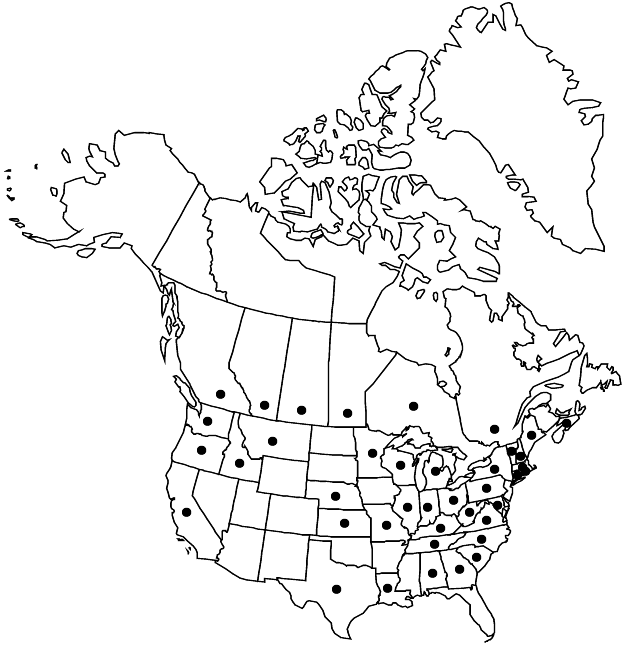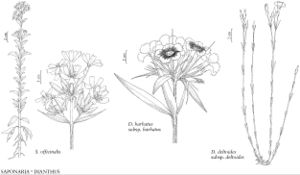Difference between revisions of "Dianthus barbatus subsp. barbatus"
FNA>Volume Importer |
FNA>Volume Importer |
||
| Line 44: | Line 44: | ||
|publication year= | |publication year= | ||
|special status= | |special status= | ||
| − | |source xml=https://jpend@bitbucket.org/aafc-mbb/fna-data-curation.git/src/ | + | |source xml=https://jpend@bitbucket.org/aafc-mbb/fna-data-curation.git/src/8f726806613d60c220dc4493de13607dd3150896/coarse_grained_fna_xml/V5/V5_326.xml |
|subfamily=Caryophyllaceae subfam. Caryophylloideae | |subfamily=Caryophyllaceae subfam. Caryophylloideae | ||
|genus=Dianthus | |genus=Dianthus | ||
Revision as of 17:38, 18 September 2019
Plants cespitose, not matted. Stems erect, simple, 10–70 cm, glabrous. Leaves: sheath 3–6 mm, 1(–2) times as long as stem diam.; blade lanceolate to ovate, (1.5–) 2.5–10 cm, green, margins finely ciliate. Inflorescences usually dense, 5–20-flowered heads, or rarely flowers solitary, axillary; bracts lanceolate, equaling or longer than calyx, herbaceous, apex acute; bracteoles 4 (or 6), green, ovate,3/4–11/4 times as long as calyx, herbaceous, apex long-aristate in distal 1/3(–1/2). Pedicels 0.1–2 mm. Flowers subsessile; calyx 40-veined, (10–)12–19(–21) mm, glabrous (lobe margins may be ciliate), lobes ovate to short-tapered, 2–7 mm; petals purple, red, spotted with white, or pink or white with (or without) dark center, bearded, 4–10 mm, apex dentate. Capsules 10–13 mm, equaling calyx length. Seeds 2–2.5(–2.7) mm. 2n = 30 (Europe).
Phenology: Flowering spring–early summer.
Habitat: Waste places, roadsides, fallow fields, disturbed riverbanks, forest edges
Elevation: 10-2500 m
Distribution

Alta., B.C., Man., N.S., Ont., Que., Sask., Ala., Calif., Conn., Ga., Idaho, Ill., Ind., Kans., Ky., La., Maine, Md., Mass., Mich., Minn., Mo., Mont., Nebr., N.H., N.Y., N.C., Ohio, Oreg., Pa., R.I., S.C., Tenn., Tex., Vt., Va., Wash., W.Va., Wis., Europe, e, sw Asia, introduced in Mexico, Central America, South America, se Asia (Java).
Discussion
Subspecies barbatus is cultivated widely and both persists at old homesites and sometimes escapes to nearby fields, etc.
Selected References
None.
